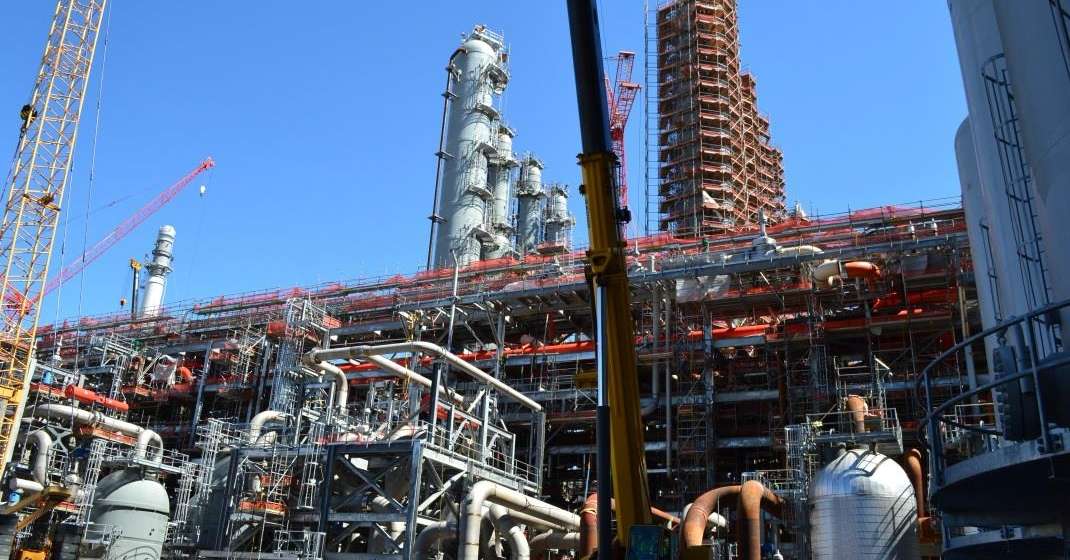On December 12, 2023, the Government Accountability Office’s (GAO) Director of Contracting and National Security Acquisitions Jon Ludwigson testified before the House Armed Services Subcommittee on Tactical Air and Land Forces on the actions needed to explain cost growth and improve engine modernization efforts for the F-35 Lightning II Joint Strike Fighter program. The testimony largely reflected a GAO report published in May that highlighted issues facing the F-35 modernization effort.
According to GAO, the F-35 will cost taxpayers an estimated $1.7 trillion over the course of its lifespan, making it one of the most expensive Pentagon programs ever. The F-35 program is currently undergoing a modernization effort, known as Block 4, to add a wide range of capabilities to the aircraft, many of which put additional strain on the engine as well as the aircraft’s power and thermal management system (PTMS). As such, efforts to modernize the F-35’s engine and PTMS are central to the entire modernization effort.
Arguing that F-35 modernization efforts are “at a critical juncture,” Ludwigson detailed the circumstances that have led to delays, obscured the roots of cost growth, and elevated technical risks for the modernization efforts.
Delays
The F-35 modernization efforts have faced delays in part due to delays in the program’s schedule for installing Technology Refresh 3 (TR-3), a “$1.64 billion suite of upgraded hardware and software technologies that will enable many future Block 4 capabilities,” of the F-35 aircraft. Essentially the modernization effort moved forward with installations of TR-3 components without ensuring related software was ready for production. Testing was another source of delays, stemming partly from a limited availability of test aircraft, and partly from competing testing priorities.
Cost Growth
The F-35 Block 4 modernization effort originally envisioned 66 new capabilities, at a projected cost of $10.6 billion. But as the number of new capabilities grew to 80 as of May 2023, the projected cost ballooned to $16.5 billion. GAO also found that TR-3 development costs increased by $30 million since 2021. While program officials attributed Block 4 cost growth to the addition of new capabilities, the program’s cost reporting mechanisms haven’t differentiated between increased costs stemming from the addition of new capabilities and increased costs stemming from development of the 66 capabilities originally envisioned for Block 4 modernization. They also haven’t addressed discrepancies between original cost estimates and actual costs.
Engine and Thermal Management Issues
Director Ludwigson also highlighted that the Pentagon’s assessment of options for modernizing the F-35’s engine and power and thermal management system (PTMS) omitted key details, such as clearly defined power and cooling requirements to support capabilities beyond those planned through 2035, as well as technical risks associated with various options.
The Pentagon has determined that the current aircraft cooling system is not equipped to handle the additional cooling needs stemming from many of the Block 4 capabilities. These cooling challenges have already added $38 billion to the program’s estimated life-cycle cost. Program officials have evaluated three options for modernizing or replacing the engine, as well as three options for modernizing or replacing the PTMS. For the engine, the options evaluated included keeping the current F135 engine while upgrading the PTMS, upgrading the F135 engine as well as the PTMS, and fully redesigning the engine while upgrading the PTMS. Two of the PTMS upgrade options improve upon the existing PTMS, while the third would replace it entirely.
GAO found that F-35 program officials did not adequately address technical risks associated with these modernization options, as their analysis did not include an assessment of the technology readiness required for each option. Some of the PTMS technologies, for example, are much less mature than the engine upgrade or replacement options. Ludwigson argues that these immaturities risk moving the program forward “with an unstable design that can cause cost increases and schedule delays.” The program’s analysis also failed to adequately address the costs of each option, as it did not estimate costs for the PTMS upgrade options. Lastly, GAO found that the F-35 program officials had failed to formally establish requirements for engine and PTMS modernization.
Recommendations
GAO recommended that the Pentagon report on differences between original estimates and actual costs, and define more specific groups of modernization capabilities. The Pentagon agreed with this recommendation and committed to implementing it. The Pentagon also agreed with the GAO’s recommendation to evaluate technology readiness levels.
GAO also recommended that the Pentagon mature all critical technologies and systems prior to starting product development. The Pentagon partially agreed, saying it would mature technologies to the greatest extent possible and would use a risk management process for less mature technologies.
The Pentagon also partially concurred with a GAO recommendation that the Pentagon obtain independent cost estimates for each engine and PTMS modernization option. Pentagon officials stated that the Director of Cost Assessment and Program Evaluation had done an independent cost estimate of the propulsion options, but not an assessment of the PTMS options.
The Pentagon did not agree with a separate GAO recommendation from 2016 to establish a distinct program for Block 4 modernization separate from the F-35 baseline program. According to Ludwigson, this would have provided more visibility and accountability over the modernization schedule, costs, and performance goals. While Congress subsequently required Block 4 reporting that achieved the recommendation’s goal, that requirement ended in March of 2023. GAO’s recommendation that Congress extend the Block 4 reporting requirements is pending congressional consideration.
Taxpayers for Common Sense concurs with GAO’s recommendations. Reporting on both original cost estimates and actual costs will help identify the root cause of cost increases and inform strategies for mitigating cost increases in the future. Evaluating the technological readiness of each component of the modernization effort and ensuring all critical technologies are mature before starting product development will help reduce delays and the additional costs that often accompany them. In fact this failure to have adequately tested before production is a common element in almost all Pentagon cost overruns. Conducting independent cost estimates for every component of the modernization effort, including PTMS options, will help give Congress and the public a more realistic understanding of the long-term costs of modernization. Finally, establishing a separate program for Block 4 modernization will increase transparency and accountability surrounding modernization decisions and costs. We therefore urge the Pentagon to fully implement GAO’s recommendations as it continues efforts to modernize the F-35.










